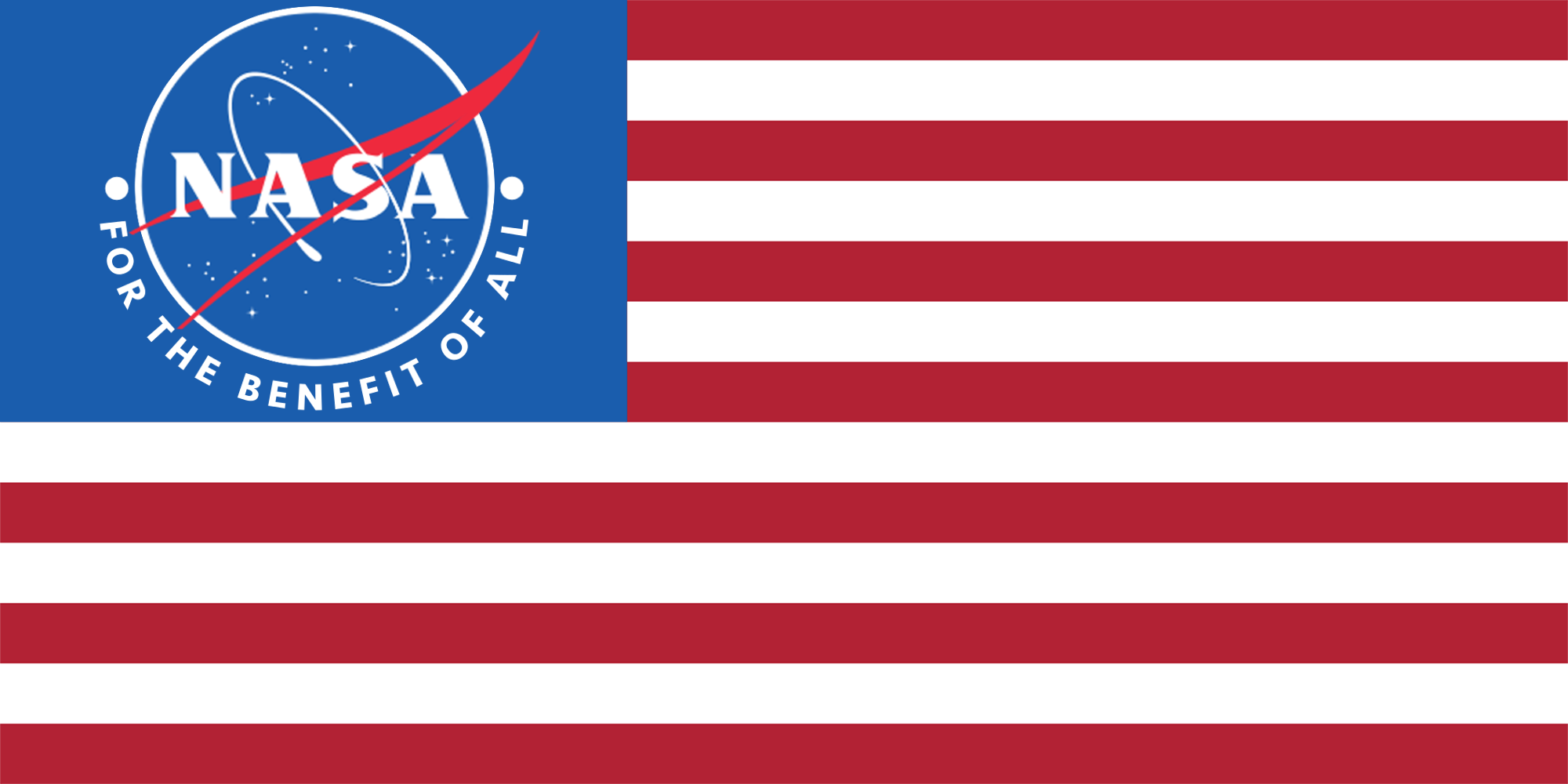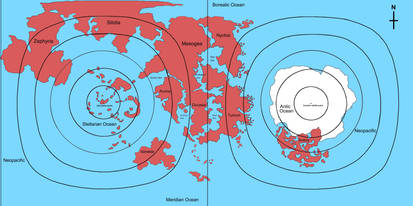Deviation Actions
Description
It took longer than anyone had imagined, but humanity finally arrived. After a century of dreams and plans and excuses, Mars was ours. China came first; in 2029 their grand hundred-strong expedition revealed more about Mars than fifty years of probes. It was meant to confirm the Middle Kingdom's new place as the true leader of humanity. Instead, it was taken as a challenge. All the great nations sent their own explorers in their nuclear spaceships. Each expedition brought back greater and greater trophies for their home nations; core samples of the dry ice caps, videos of liquid brine flowing freely over the surface, specimens of subterranean bacteria native to the Red Planet, and even fossils of ancient pseudo-vertebrates that swam the oceans of prehistoric Mars.
But this was all just a preamble to what was to come. In 2039, America launched the first prototype ship propelled by Mach effect thrust (MET drive) a method of propulsion theorized fifty years earlier by the physicist James Woodward. By utilizing an ancillary feature of the theory of relativity, these new engines could produce stationary thrust without ejecta, essentially converting electricity directly into acceleration. These new engines were orders of magnitude more efficient than the liquid oxygen engine of the First Space Race, and even the nuclear fusion engines of the period. With these, colonization of Mars was not just feasible, but practical.
The great powers were inspired, and they all were eager for this great challenge, to colonize another world, not like the orbital cities and surface mines of the moon, still heavily dependent on Earth economically and materially, but a truly self-sufficient second homeworld for humanity. The world's space agencies drafted plans for interplanetary cargo ships driven by MET engine, huge orbital mirrors that could melt the dry icecaps and bathe the planet in new heat and warmth, engineered bacteria that could thicken and warm the atmosphere, and most ingenious of all, an magnetoshield to be placed in orbit of Mars tidally locked with the sun, thus permanently protecting the Martian atmosphere from being slowly eroded by cosmic rays.
These plans and more were exchanged and agreed upon in the international submit on Martian colonization in 2042-3. Here the nations of Earth would divide up Mars between them. The first step would be taken by the most premier nations in the world, China, the United States, the European Union, India, Japan, Brazil, Argentina, Australia, Iran, the Arab League, and the African Union. As Mars grew more habitable, others would follow. The first stage of colonization would be in the region of Hellas Planitia. This was by far the deepest region of Mars, so much so that liquid water could already exist there for short period in the height of summer.
The claims were staked, the programs were passed through congress after congress, and the plans were finalized. Hundreds of billions were poured into warming, shielding, and planting the great basin. Microbes were designed to break down the toxic chemicals in the Martian soil, modified grasses, algaes, and invertebrates were introduced. Then came small trees, cacti, mammals, birds, and fishes. The seas of Hellas were home to shallow water fishes, crustaceans, mollusks, algae, plankton, and sponges, modified for the highly saline water, made up a marine ecosystem that was sustainable, but much less productive than the seas of Earth.
Stunted evergreens derived from trees in the Rocky Mountains were grown to accelerated maturity in greenhouses and planted in the lower altitudes by drones. Tough steppe grasses from the Tibetan Plateau and the Mongolian Plains were spread over the middle altitudes, and the high scrub and desert lands with species from the Andes, Himalayas, Gobi, Sahara, and Sonora. In addition to thousands of insects, rodents, birds, and other small animals brought to populate the planet, a few large animals like guanacos, goats, yaks, Tibetan wolves, jackals, and even a strain of woolly kangaroo were introduced soon.
The first colonist arrived on their new home in 2051. That was when things started to go wrong.
Despite all pomp and circumstance and resources spent, Hellas Panitia was still dry, thin aired, infertile, and desolate. Farming this land, even with the most modern techniques, was a hard life indeed. The goal of the project was not to create a subsistence economy, but the poor soil and thin, cold air of Mars required the vast majority of the population to work in food production. Compounding the problem, the genetically engineered crops had difficulty surviving, especially after the accidental introduction of pests that flourished in the underdeveloped Martian ecosystem.
This led to still more obstacles. Mars was still heavily dependent of Earth for resources, technology, and occasionally even foodstuffs to mitigate the trade imbalance, Mars needed industry and exports. This presented a problem. The one plentiful resource on mars was iron, and that could be collected from the moon or the asteroid belt without the extra cost and difficulty of getting through an atmosphere. Added to that, the low yields of Martian farms left too little of the population free to develop advanced sectors of the economy even for domestic use, perpetuating Mars's dependence on extra Martian resources and expertise, leaving their home governments to foot the bill.
By the close of the 2050s, there was a strong movement on Mars to switch to vertical farming, a technique that was proven but still formative on Earth. This would be both tremendously difficult and expensive, and many back on Earth were already struggling to justify the enormous amounts of money, time, and genius thrown into Mars. Still, most of the patrons went ahead with the plan, but it never saw fruition.
Despite how skillfully the Chinese had projected the air of the modern superpower, their country was wracked with deep divisions. The fourth generation of CCP leaders had failed to address many of the problem left to them by their predecessors. The division of wealth between the urban coast and the rural interior grew steadily worse, the male-female population imbalance and the low birth rate contributed to the systemic breakdown of the social fabric, growth of the middle class slowed, tens of millions of blue collar workers were unemployed by machine labor, and China's ecosystems continued to degenerate. Added to the trillions spent on Mars, things would finally snap in 2062. Popular uprising gave birth to the Second Chinese Civil War.
The chaos in China spilled over to worsen friction between European and Asian Russia, leading to protests, riots and even the threat of the Russian Federation collapsing. These events provided an excuse for the Earthly powers to cut funding for their Martian programs, as many of them pursued interventionist or containment policies against the troubled regions. And once the sponsors were out, they were out for good. Mercury, the Asteroid Belt, Venus, and the Jovian system would be the focus of colonization thereafter.
The orbital mirrors and the magnetoshield had been designed to function indefinitely with very little maintenance, and the biosphere was established enough to survive and continue warming the planet, so Hellas Planitia would remain habitable indefinitely, and prolonged exposure to the low Martian gravity, in addition to causing severe motor, circulatory, skeletal, and joint problems for many immigrants, rendered those born there incapable of surviving off of their homeworld, so Marian colonies themselves would continue, regardless of Earth's level of interest.
But while the settlers continued their hard lives without Earth's aid, they would still share in Earth's problem. The 2060s and 2070s would see the arrival of a second wave of colonists, this one consisting of refugees, political exiles, or anyone else with reason to be off of Earth. Central Asian nomads fleeing the chaos of their homeland were deported to the Viking Grassland; Falun Gong practitioners, the victims of decades abuse by the Chinese government, were granted a homeland by the international community in Chinese Martian territory; the Saudi royal family and their retainers were settled in Arab League territory after the fall of their government; the United States established penal colonies; Israel sponsor the deportation of millions of Palestinians; the African Union resettled most its Pygmies on Mars due to the loss of their traditional lands and the persistent persecution; and many other hardline cultural and religious groups set down their own roots.
Hellas Planitia was known as a rugged frontier land with a diverse and hearty population, but a backwater, a land of little real relevance, a contemporary take on Wild West romanticism.
The one-time poster child of space colonization, had become, in a word, quaint.
Looks nice :)




















![[Fictional] La Lousiane and Her Neighbors in 1906](https://images-wixmp-ed30a86b8c4ca887773594c2.wixmp.com/f/bd81999f-4e2c-409e-a39f-c5f2ac56434c/dc32jfx-121dba0a-8cf4-4044-b588-2925e4ca3898.png/v1/crop/w_184)











